The Ultimate Controller’s Guide to Using Smokes
In this guide we’ll cover everything you need to know about using smokes as a Controller in Valorant!
In this guide we’ll cover everything you need to know about using smokes as a Controller in Valorant!
Did you ever need to fill smokes on your team, but you didn’t know how to place your smokes? Are enemies constantly using your smokes to their advantage? Do you ever feel overwhelmed, not knowing when and where to place smokes? This smoke guide is here to rundown all the basics and insights to smoking in Valorant. After reading this guide, you should be able to fill in as your team’s Controller and master smoking in no time.
Using smokes helps your team take sites on Attack and defend sites on Defense. There are 4 types of smokes that can be played during the game. There are passive smokes, aggressive smokes, and one-way smokes. Understanding these variants will help in your decision making when smoking mid-game.
Passive smokes allow the enemy to take space, however it buys time for your team to move or make a play. A passive smoke is a reactive smoke; when placing the smoke, you are reacting to enemy positioning, utility usage or movement. When using a passive smoke, Defenders typically need to only watch one choke, whereas Attackers need to worry about multiple angles.

Here is a passive smoke on Ascent B Site. The Omen smoke at the chokepoint of B Main allows the enemies to take all of B Main. It gives the Defense time to rotate, as well as a point of contact for Neon to play off of.
Aggressive smokes allow your teammates to be aggressive on Defense. These smokes allow Controllers to act as Defensive Initiators by signaling a quick execute. This execute creates space for the team and makes it easier for early frags from your Duelist.
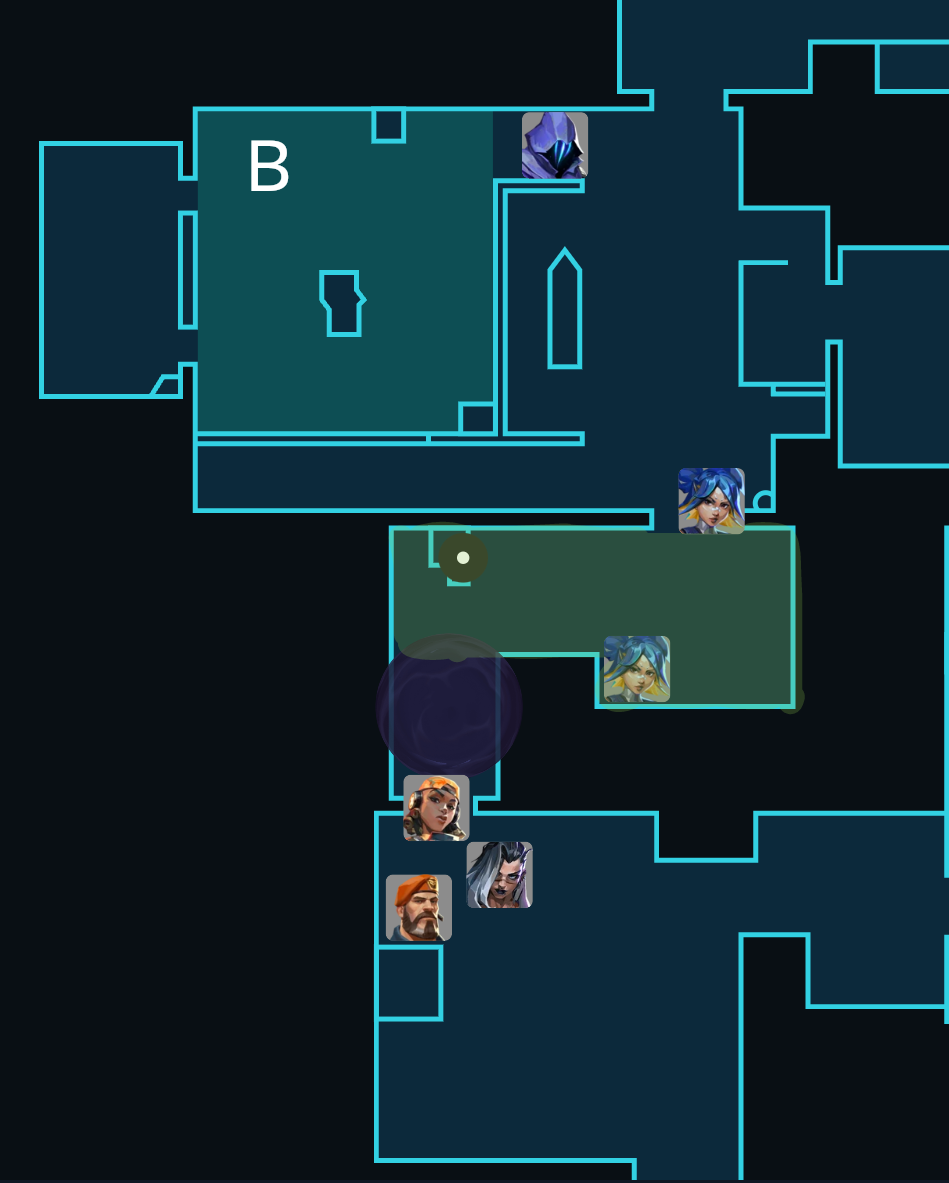
This is an example of an aggressive smoke on Ascent B Main. Instead of smoking the chokepoint in B Main onto site, the smoke is much deeper, resting at the corner coming into B Main. This either forces the opponents to use utility to cross this smoke or forces them to wait it out. The positioning of the Neon is more aggressive. She can now tuck into the cubby in B Main or play an off-angle at the chokepoint.
One-way smokes can either be passive or aggressive, but they are special as they allow you to see the enemy without them being able to see you. These smokes have to be specially placed so that this effect can come into play. These smokes tend to sit high, where you can see the enemy’s feet, while they cannot see anything.
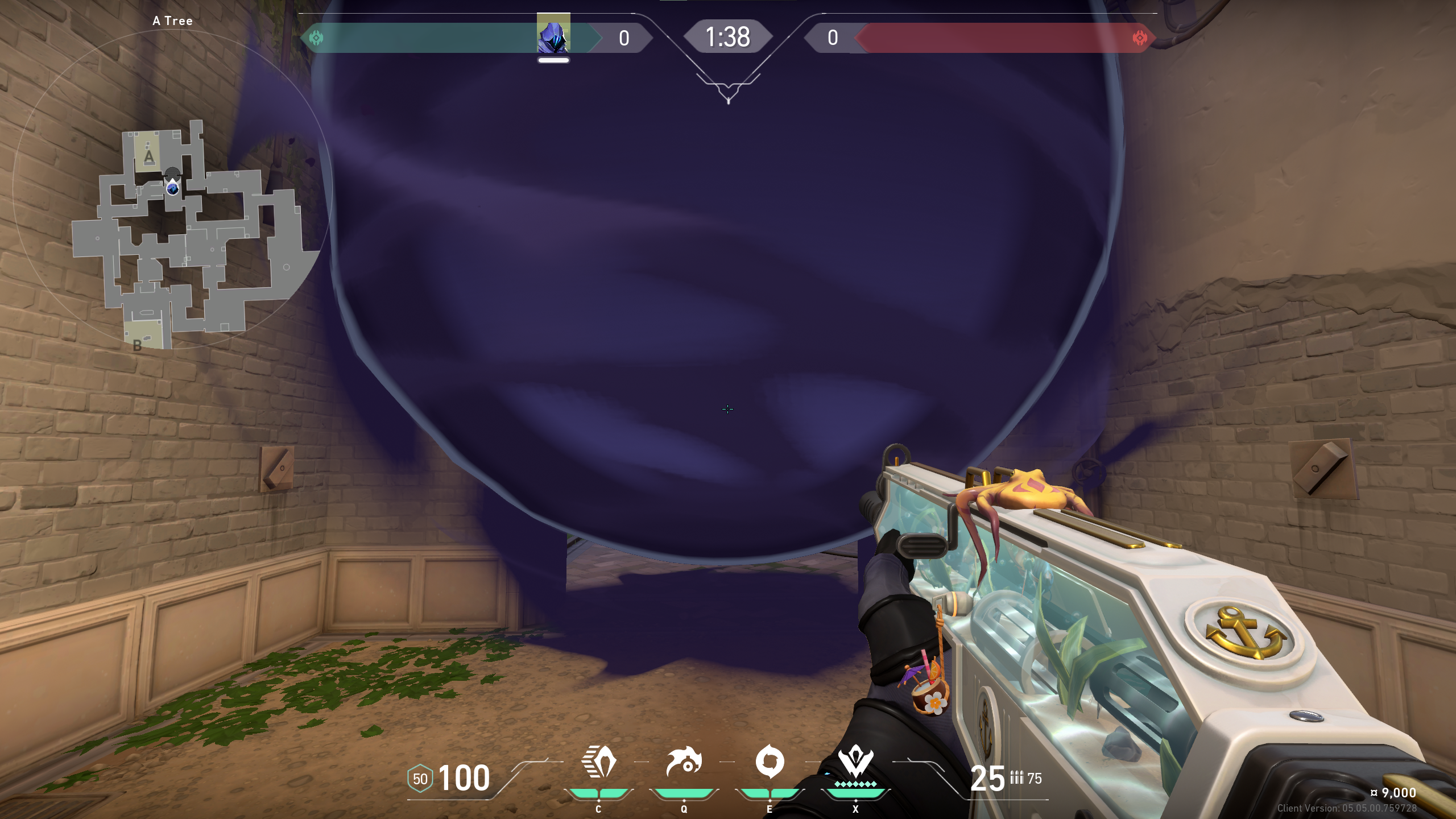
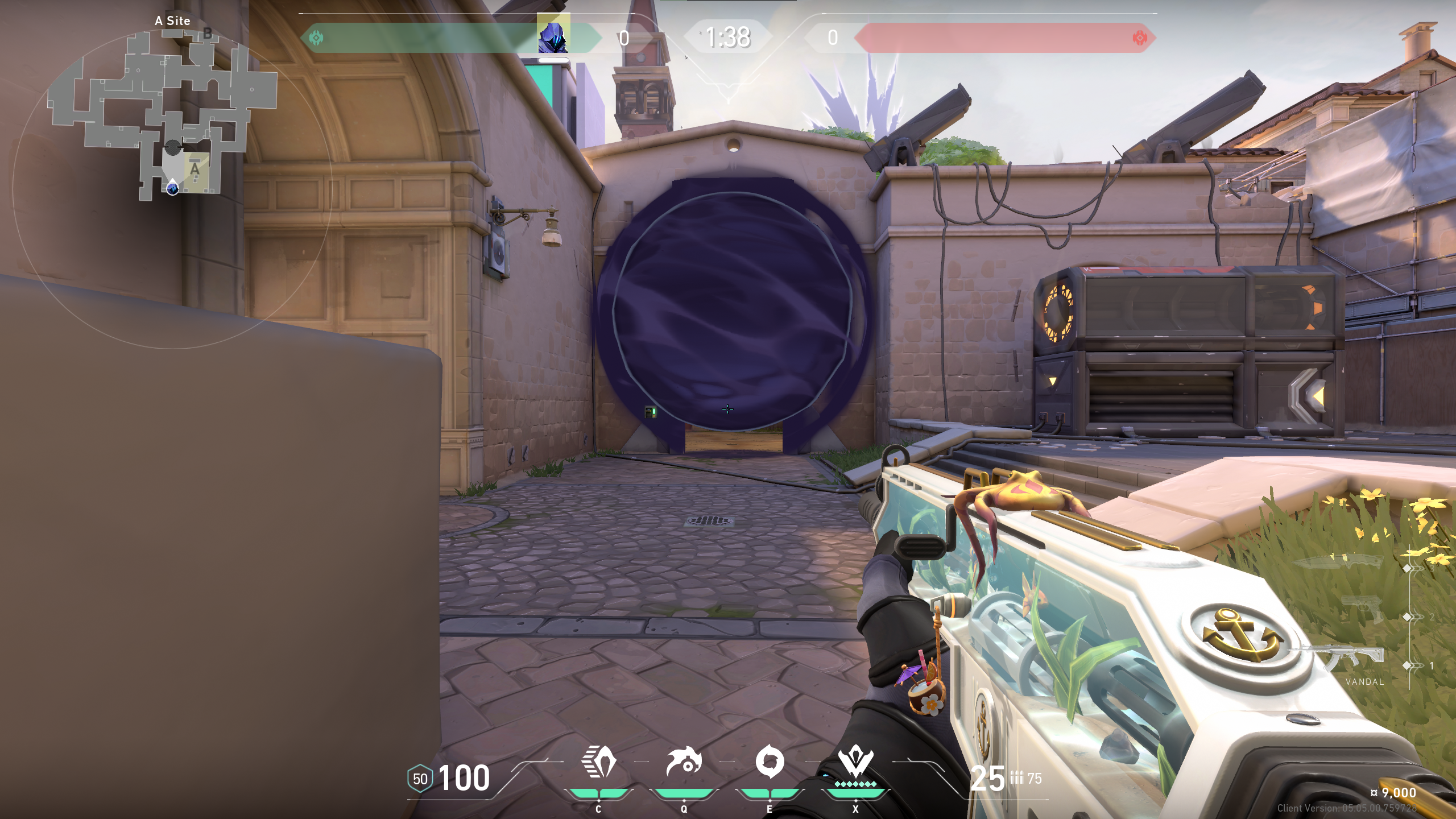
Controllers’ smokes can accomplish many things. Understanding what you want to do before you do it, allows for an easier decision-making process when placing the smokes on the map. Smokes can be used to:
On Attack, blocking chokepoints revokes easy access from Defenders off site who are trying to help their teammates on site. On Defense, blocking chokepoints allow Defenders to counter an Attacking side’s execute more easily, as well as buy more time for teammates to rotate for help. Chokepoints should be smoked before the enemy executes a play, typically at the start of a round.
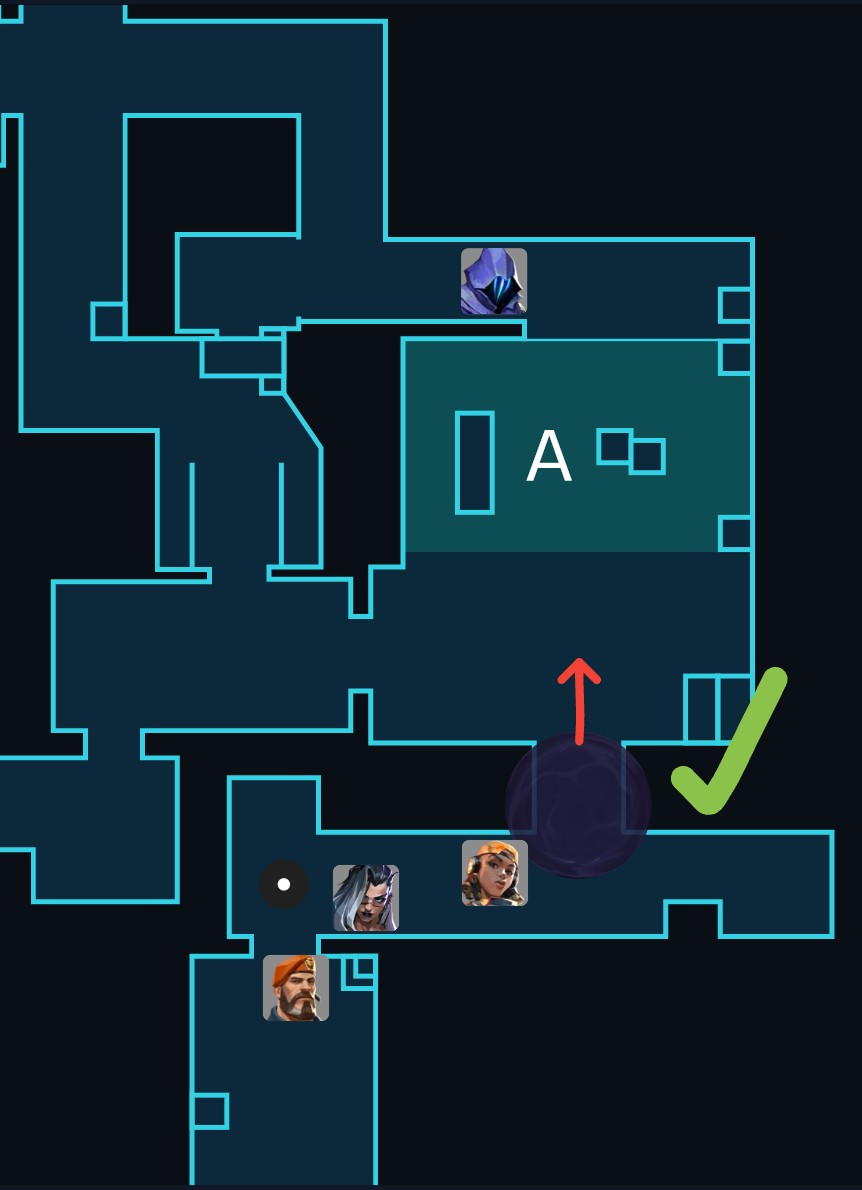

This is an example of a good smoke placement in Ascent A Site. Here we see a passive smoke being placed on the A Main chokepoint. The placement of this smoke is good because there are less possible angles for the Attackers to push through. The Defender knows that they can only come through the archway, and nowhere else.

This is an example of a bad smoke placement on the chokepoint. Here the passive smoke is placed too far out toward the Defenders and their controlled space. In this scenario, the Attackers can choose whichever side and angle they want to exit out of. Instead of only being constricted to the archway in the previous example, they now have more width to move around, since the smoke is wider. This allows them more freedom of movement, which means more ground to cover with your crosshair.
When blocking chokepoints with your smokes, you are also blocking sightlines. Blocking sightlines is important on Attack to create space between your teammates and the Defense. Passive or aggressive smokes can be used to block sightlines when entering a site. Smokes used to block sightlines are used when safety needs to be ensured upon entering a site or space with little to no information. Blocking sightlines is also important when executing on a play, which can be seen in the next example of smoking.
Isolating enemies using smokes can be done by blocking sightlines, blocking chokepoints, or blocking both. Isolating enemies is important when the opposition has a numbers or gun advantage. Isolating rifle players when your team is on an eco-round can give your team rifles to work with since it allows for easier fights. Isolating enemies when they have more agents alive helps level the playing field during the round.
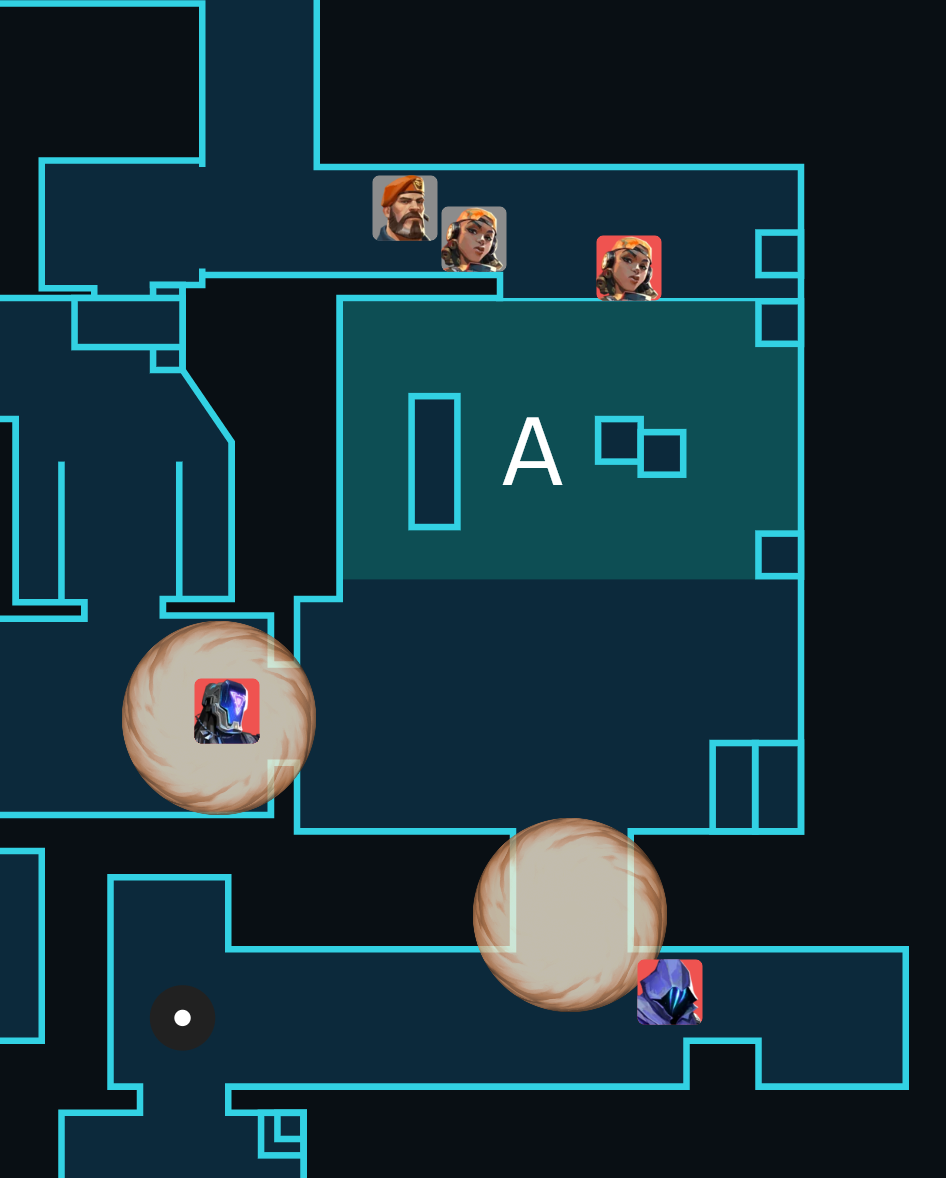
This example, on Ascent A Site, shows how smokes can help isolate the opposition to give your team an advantage. Brimstone and Raze are Heaven, while the enemy Raze is Hell, the KAY/0 is Tree, and the Omen is A Main. Smoking off Tree and A Main allows for a 2 v 1 fight instead of a 3 v 2, this swings the fight to your favor. Successfully eliminating the Raze in Hell allows for an even 2 v 2. In which, the Defense is together, while the Attacking team in their post plant positions are split up.
Smokes can be used to not only cover sightlines and take space, but to also cover utility to give the enemies a false sense of security. Covering utility such as a Killjoy turret with a smoke, terminates its effectiveness since it would not alarm the Killjoy that enemies are nearby. This can also be done with other utilities such as a Chamber Trademark and a Sova Dart (the Sova Dart smoke cover is usually done by Jett since the time to place a smoke is much quicker and accurate). Doing so denies information for the enemy team and can lead to a surprise execute.
It is also possible to cover friendly utility, or even your own to effectively damage the enemy team. Using Brimstone, a smoke combined with a molly is effective because the smoke covers the fact that there is a molly on the ground. Enemies can try to push smoke, unbeknownst to them, that there is fire below their feet. This allows for chip damage for an easier fight in the near future. Same can be done with Viper and her smokes and mollies. A collaboration between a Controller agent and Killjoy allows for the same molly smoke combo to be done.
Playing within your own smokes allows for creative play when dealing with the opposition. Smoking yourself can block sightlines while simultaneously masking you from enemies. These types of plays are done for “hero plays” when your team is desperate for a round win. Covering yourself or your teammates with smokes can also be done when defusing the Spike in danger. Covering a diffuser forces the enemies to spam through smoke or push the smoke to get the kill. Again, these types of smoke plays are done in desperation or “hero plays”. An example of a couple gimmick plays are seen here:

Here an Omen can play behind Heaven’s double box. They can then smoke directly in front of themselves and spam through the smoke shooting at the chokepoint into A Site on Ascent. This play has been done before in professional play, as Nitr0 clutched a round with a 3K on map point spraying through the smoke and toward the choke. This smoke was clever because it covered the enemy’s sightlines as they were unable to see Nitr0 move from the double box to the middle of Heaven.
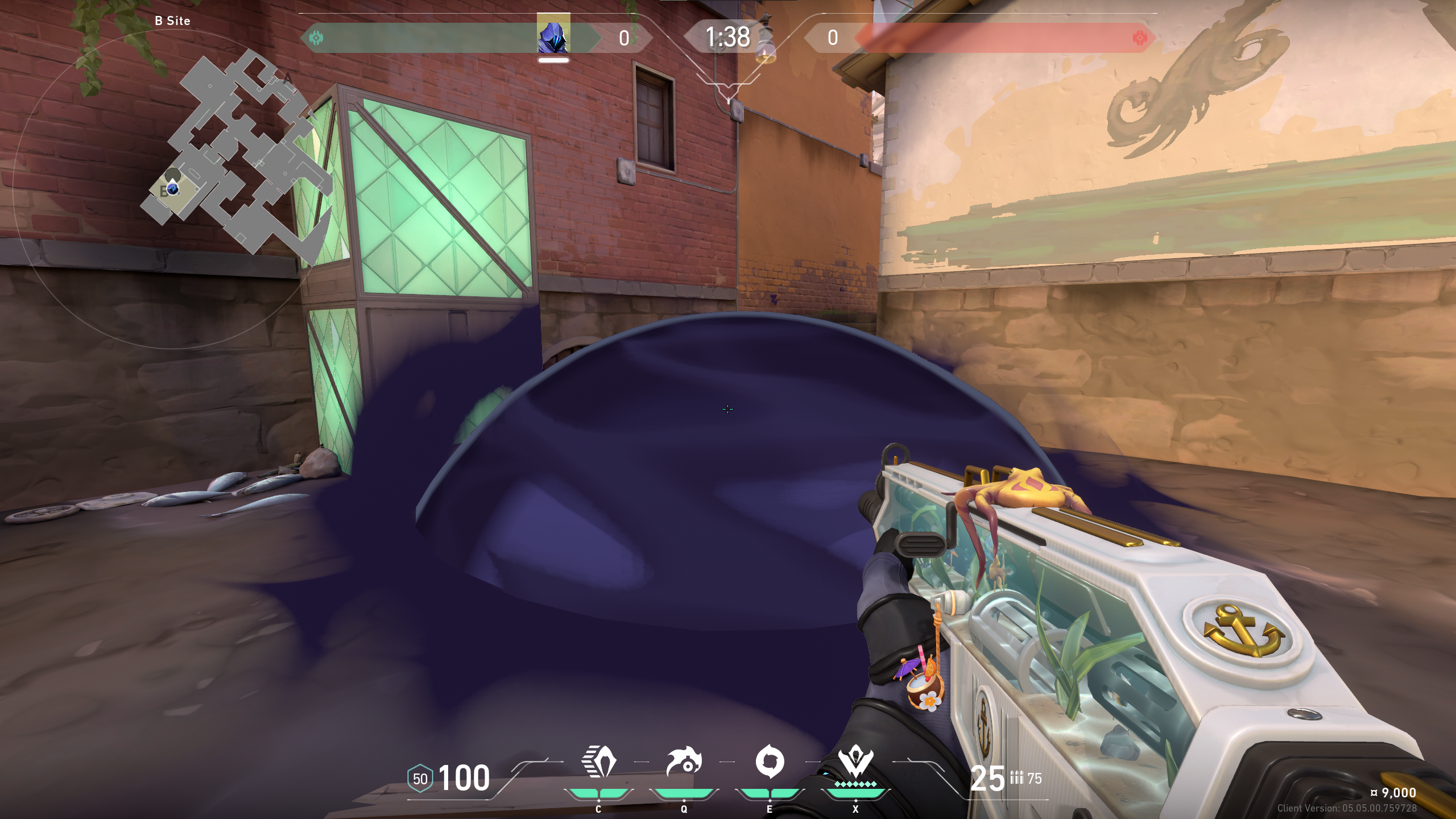
Another gimmick play can be seen here. It looks like a misplaced smoke trying to cover stairs; however, it is tall enough to be crouched in and be undetected. This can be done on an eco-round with a shotgun to catch enemies off guard. The “Whoops I Messed Up (But Not Really)” smoke can be done in any passive chokepoint smoke. To reiterate, this is for “hero plays” and not to be used all the time, due to its inefficiency in helping your teammates.
The final reason to smoke is very simple. Smokes can act as a decoy. Smoke A Site, as you would for an execute, all while your team goes B Site. It is simple and effective and can catch an enemy team off for a round or two. Conditioning a team to react a certain way to your smokes and then pulling the rug from under them in the middle of the match is a great way to secure a round when needed. Decoy smokes should be done mid or late-game.
Conclusion
Smokes are a lot more multifaceted than people tend to believe. It is best to mix up your smokes to keep the enemies guessing. Switching from passive to aggressive smokes, using decoys, and even sacrificing a smoke to cover utility is necessary to keep enemies on their toes. Now it’s time to use what you’ve learned and use it to fill when an insta-lock Reyna begs you to play smokes. You’d typically ignore them, but everyone else said they can’t play smokes and you can’t afford to lose RR. Good luck and have fun!